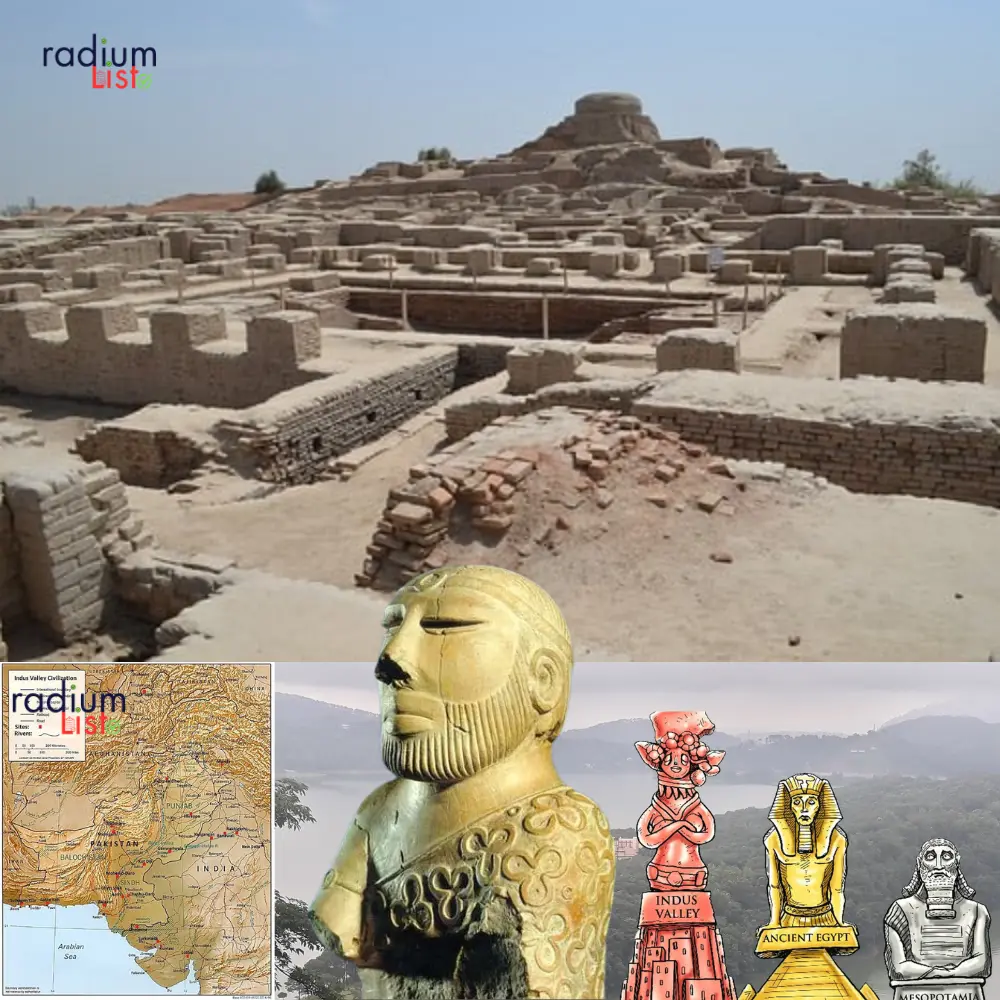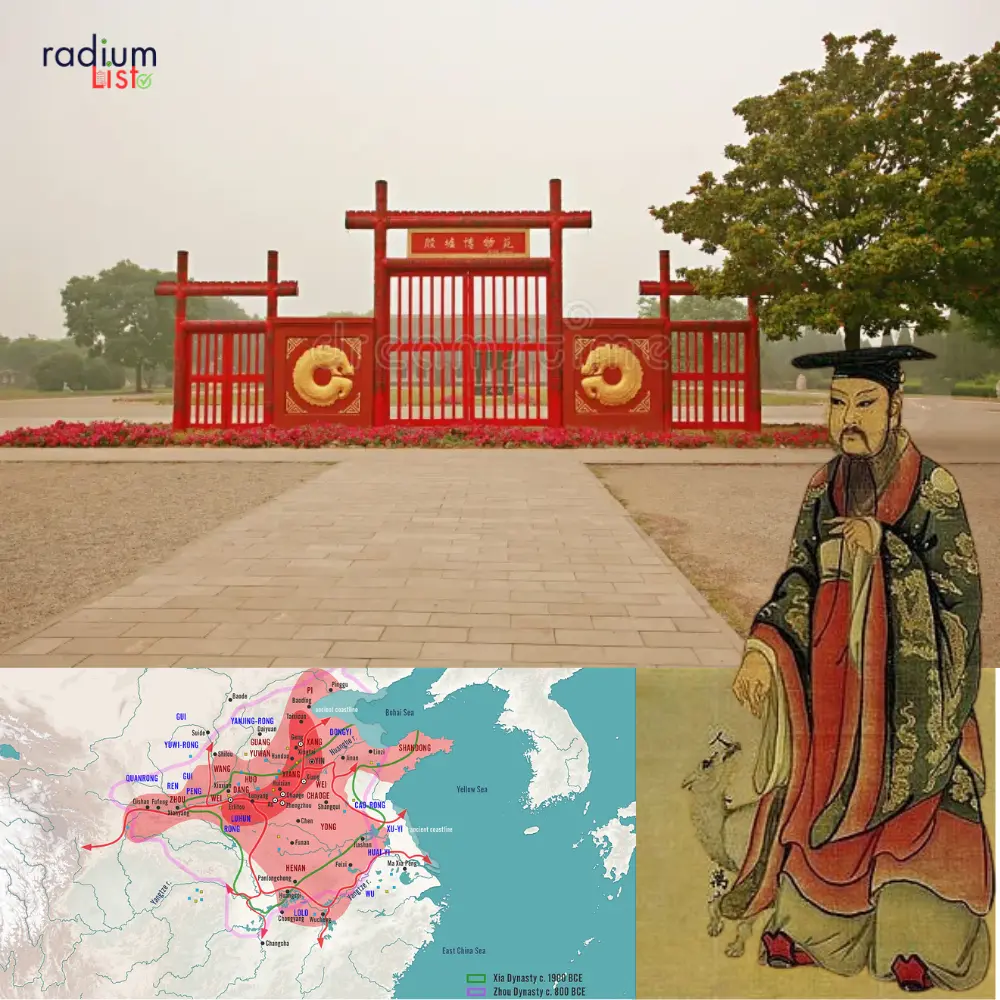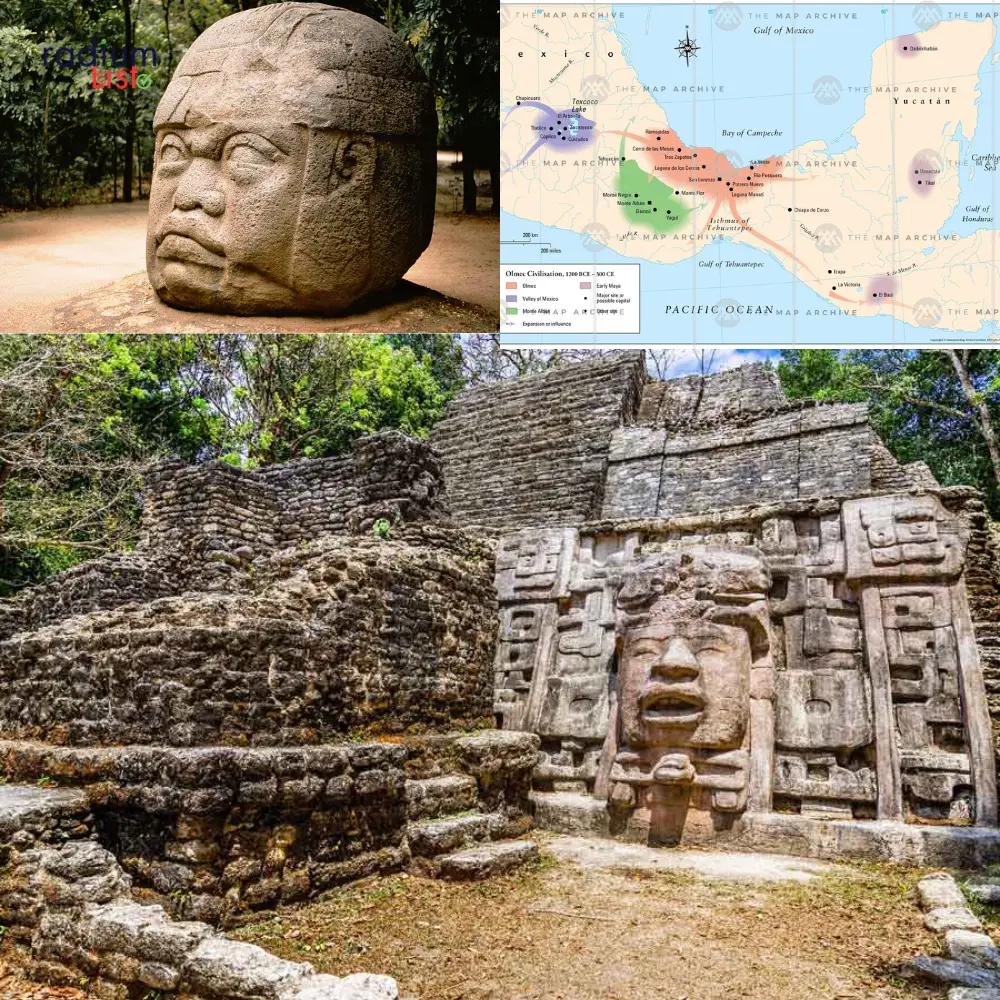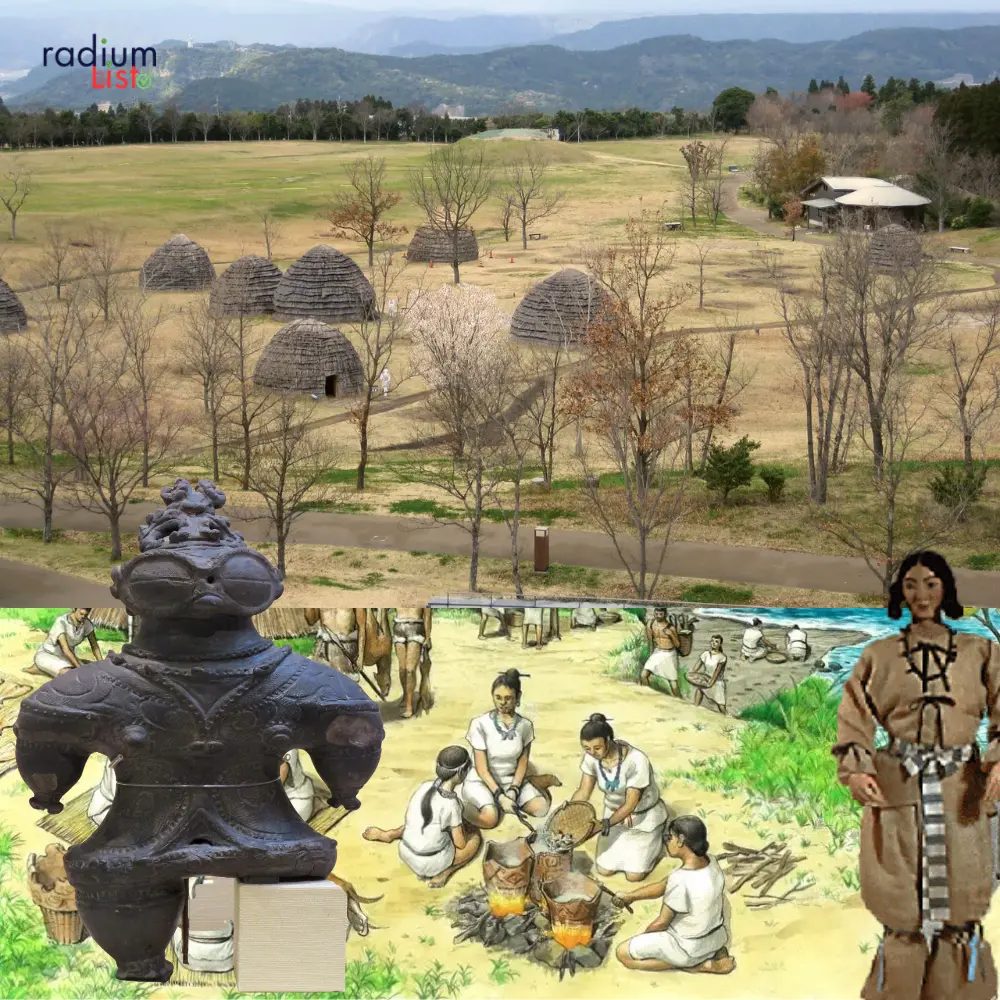Top 10 Oldest Civilizations in the World
top 10 Oldest Civilizations in the World
Sumerians (Mesopotamia)
The Sumerians, an ancient civilization that emerged around 4500 BCE in the region of Mesopotamia, left an indelible mark on human history. Situated between Tigris & Euphrates rivers in What is now modern-day Iraq, the Sumerians pioneered numerous Cultural & Technological advancements.
Central to their legacy is the development of one of the earliest known writing systems, cuneiform. Using a reed stylus, they inscribed wedge-shaped symbols onto clay tablets, Creating a means of recording information, from administrative records to epic poetry. This innovation facilitated communication, trade & the preservation of knowledge.
The Sumerians excelled in urban planning, establishing city-states with impressive architecture, such as the iconic ziggurats—stepped pyramids that served as religious centers. These city-states, including Ur, Uruk, & Lagash, formed the foundation of their society, each with its own governance, religion, & distinct cultural practices.
In the realm of governance, the Sumerians established early forms of law and administration. They developed codes of law that addressed issues such as property rights, contracts, and criminal offenses, laying the groundwork for legal systems that followed.
Agriculture was fundamental to Sumerian life, and their mastery of irrigation techniques enabled them to harness the fertile lands between the rivers. This allowed for surplus food production, leading to population growth and specialization of labor.
Sumerian religious beliefs were polytheistic, with a pantheon of gods & goddesses governing various aspects of life. Temples played a central role in their society, serving as places of worship, Economic centers, & repositories of wealth.
Despite eventually being absorbed by other civilizations, the Sumerians’ legacy endured through their contributions to writing, law, architecture & culture. Their innovations laid the groundwork for the rich tapestry of human civilization that continues to evolve to this day.
Ancient Egyptians
The ancient Egyptians a civilization that flourished along the banks of the Nile River from around 3100 BCE to 30 BCE, left an indelible imprint on history through their remarkable achievements in Culture, Architecture, Religion, & Governance.
At the heart of ancient Egyptian society was a complex religious & spiritual system. The Egyptians believed in a pantheon of gods & goddesses that governed various aspects of life, & they developed intricate burial practices & rituals to ensure a successful transition to the afterlife. The construction of awe-inspiring structures like the pyramids & elaborate tombs attests to their beliefs in the importance of the afterlife.
Architecturally, the ancient Egyptians created wonders that continue to captivate the world. The towering pyramids of Giza, including the Great Pyramid, stand as a testament to their engineering prowess & dedication to honoring their pharaohs. In addition to the pyramids, they built grand temples, intricate obelisks, & colossal statues that showcased their mastery of stone carving & construction.
The Egyptians’ hieroglyphic writing system, carved onto monumental structures and written on papyrus, enabled them to record history, Literature, & administrative documents. This system, along with demotic & hieratic scripts, allowed for the preservation of knowledge across generations.
The society was organized around a strong central authority, with the pharaoh serving as both a political leader & a divine figure. The Nile River, central to their civilization, facilitated agriculture & trade, ensuring the kingdom’s prosperity.
Art & culture thrived in ancient Egypt, with intricate jewelry, pottery, & paintings showcasing their artistic sophistication. The “Book of the Dead,” a collection of spells & rituals, shed light on their beliefs about the afterlife & the importance of moral conduct.
While the ancient Egyptian civilization eventually declined and merged with other cultures, its legacy remains palpable in modern times. The enduring fascination with their architecture, Art, & cultural practices is a testament to the profound impact of this ancient civilization on the course of human history.
Indus Valley Civilization
The Indus Valley Civilization, spanning from approximately 3300 BCE to 1300 BCE in what is now modern-day Pakistan and northwest India, stands as a testament to advanced urban planning, intricate cultural practices, and early forms of governance.
One of the civilization’s remarkable achievements was its sophisticated urban centers. Cities like Mohenjo-daro and Harappa boasted meticulously planned layouts, featuring a grid-like street system, advanced drainage systems, and well-constructed brick buildings. These innovations highlight the civilization’s mastery in urban design and infrastructure management.
Trade played a pivotal role in the Indus Valley Civilization’s prosperity. Archeological evidence indicates long-distance trade networks extending to regions like Mesopotamia and beyond. The use of standardized weights, measures, and a system of seals for trade documentation indicates a structured economic system that facilitated commerce and exchange.

The writing system of the Indus Valley, while not yet fully deciphered, showcases their aptitude for communication and administration. Intriguing seals featuring unique symbols suggest an organized way of recording information, possibly related to trade, religion, or governance.
Religious and cultural practices flourished in the civilization. Intricate jewelry, pottery, and sculptures reflect their artistic prowess. The presence of a large public bath in Mohenjo-daro suggests the significance of ritual bathing and communal activities in their society.
The management of water resources was crucial to their agricultural success. The civilization’s proximity to the Indus River enabled the construction of elaborate irrigation systems, ensuring a stable food supply & enabling population growth.
While the exact reasons for the civilization’s decline remain debated, factors such as environmental changes, shifts in trade routes or internal social dynamics may have played a role. Despite its eventual decline, the Indus Valley Civilization left an enduring legacy in its innovative urban planning, sophisticated trade networks, & rich artistic expressions that continue to intrigue & captivate the world.
Shang Dynasty (China)
The Shang Dynasty, which thrived in ancient China from around 1600 BCE to 1046 BCE, represents a pivotal era characterized by significant advancements in governance, culture, and technology.
At the heart of the Shang Dynasty’s accomplishments was a centralized system of governance. Ruled by a line of kings, the dynasty established a hierarchical society with the king at the apex. A sophisticated bureaucracy, complete with administrators, officials, and a well-organized military, enabled effective governance, resource management, and social stability.
The Shang Dynasty is renowned for its oracle bone script, an early form of Chinese writing. This script was etched onto bones and turtle shells, often used for divination purposes. The script provides valuable insights into their culture, beliefs, and societal concerns, offering a window into the past.
Artistry and craftsmanship flourished during this period. The Shang Dynasty produced intricate bronze vessels, jade artifacts, and pottery, showcasing their mastery of metallurgy and artistic expression. These artifacts not only served utilitarian purposes but also held symbolic significance in rituals and ceremonies.
Religion and spirituality played a central role in Shang society. Oracle bone inscriptions reveal the Shang people’s practice of ancestor worship and divination to communicate with the spiritual realm. Elaborate tombs, filled with precious offerings, further reflect their beliefs about the afterlife.
The dynasty’s agricultural innovations were essential for its sustenance. Advanced techniques in farming, including the use of iron tools and irrigation systems, contributed to increased food production and population growth.
The Shang Dynasty also witnessed military and technological developments. They employed advanced bronze weaponry, such as chariots and weapons, in warfare and are credited with significant strides in horse domestication.
While the Shang Dynasty eventually gave way to subsequent dynasties, its legacy endures in Chinese history and culture. Their contributions to governance, writing, art, and technology laid the groundwork for the cultural tapestry of China, shaping its trajectory for centuries to come.

Olmec Civilization
The Olmec Civilization, which emerged around 1400 BCE in Mesoamerica, holds the distinction of being one of the earliest complex societies in the Americas, setting the stage for subsequent cultures & civilizations.
Located primarily in what is now present-day Mexico, the Olmec Civilization is renowned for it’s monumental art & cultural influence. They are credited with creating colossal stone heads, Intricate sculptures, & stelae, showcasing their advanced craftsmanship and artistic expression. These iconic stone sculptures often depicted rulers or deities and served as symbols of power and identity.
The Olmecs’ impact extended beyond art, as they laid the groundwork for Mesoamerican cultural practices. Their intricate religious beliefs, including a pantheon of gods and shamanistic rituals, left a lasting imprint on later civilizations like the Maya and Aztecs. The concept of ritualized ballgames, central to Mesoamerican societies, likely originated with the Olmecs.

Trade and economic networks were vital to the Olmec way of life. They engaged in long-distance trade, exchanging goods such as jade, obsidian, and other precious materials with distant regions. This trade facilitated cultural exchange and contributed to the spread of Olmec influences.
The Olmec Civilization was organized into city-states with complex social structures. Rulers and elites held significant power and likely governed through religious and ritualistic authority. Archaeological evidence suggests the presence of ceremonial centers and ball courts, underscoring their emphasis on ritual and communal activities.
While the Olmec Civilization declined by approximately 400 BCE, its legacy endured through the cultural traditions and influences it imparted to subsequent societies. The Olmecs’ contributions to art, religion, trade, and governance played a foundational role in shaping the rich tapestry of Mesoamerican civilizations that followed.
Ancient Greeks
The Ancient Greeks flourishing from the 8th century BCE to the 4th century CE, left an indelible mark on human civilization through their profound contribution to Philosophy, Politics, Art & Science.
Philosophy was a hallmark of Ancient Greek thought. Philosophers like Socrates, Plato & Aristotle laid the groundwork for Western philosophy, exploring fundamental questions about existence, Ethics & the nature of reality. Their inquiries ignited a tradition of intellectual exploration that continues to influence modern thought.
The Ancient Greeks were pioneers in the realm of governance. The city-state of Athens introduced the concept of democracy, where citizens participated in decision-making & civic affairs. This revolutionary idea laid the foundation for modern democratic systems & governance structures.
Artistic achievements were a central aspect of Ancient Greek culture. Their sculptures, characterized by an emphasis on naturalism & idealized forms, captured the human spirit & became a defining feature of Classical art. Architectural marvels like the Parthenon showcased their mastery of engineering and design.
Science and mathematics flourished in Ancient Greece. Euclid’s work in geometry, Archimedes’ contributions to mathematics and physics, and Hippocrates’ advancements in medicine exemplify their intellectual prowess. These discoveries paved the way for future scientific inquiry and technological development.
The Olympic Games, originating in Ancient Greece, embodied the spirit of athleticism & camaraderie. These games, held every four years, celebrated physical prowess & unity among city-states, fostering a sense of shared identity.
Ancient Greek literature, epitomized by epic poems like the “Iliad” & the “Odyssey” by Homer, has been an enduring source of inspiration. These narratives not only entertained but also conveyed moral lessons & cultural values.
In conclusion, the Ancient Greeks are a testament to human intellectual & creative potential. Their contributions to Philosophy, Governance, Art, & science have shaped the course of human history, Influencing the development of modern thought, Systems of government, Artistic expression, & Scientific inquiry.
Persian Empire
The Persian Empire founded by Cyrus the Great in the 6th century BCE, stands as one of the most influential & expansive civilizations in history, leaving an indelible mark on Governance, Culture & the exchange of ideas.
Spanning a vast expanse from the Mediterranean Sea to the Indus River. The Persian Empire was characterized by its innovative approach to governance. Cyrus & his successors introduced a policy of Religious & Cultural tolerance, allowing subject peoples to retain their customs & beliefs. The administrative structure of Satrapies, or provinces, Facilitated efficient governance & the equitable collection of tribute.
The Persian Empire’s renowned Royal Road, stretching over 1,600 miles, expedited communication & trade throughout the vast empire. This network allowed for the exchange of goods, Ideas, & Cultural practices, fostering a diverse and interconnected realm.
Cyrus the Great’s Cylinder, often hailed as an early declaration of human rights, emphasized the importance of justice and compassion in governance. This ethos of benevolence contributed to the empire’s stability and longevity.
The art and architecture of the Persian Empire reflected its multicultural influences. The monumental city of Persepolis, with its grand palaces and intricately carved reliefs, showcased a fusion of Persian, Mesopotamian, and Egyptian artistic styles.
Zoroastrianism, the empire’s state religion, introduced the concept of duality between good and evil, influencing ethical and moral frameworks. The Achaemenid kings, including Darius and Xerxes, left a legacy of inscriptions that shed light on their rule and beliefs.
Despite its eventual decline, the Persian Empire’s legacy persisted through cultural diffusion and the continued influence of its administrative practices. The empire’s ethos of tolerance, infrastructure development, and cultural exchange resonated across the centuries, shaping the contours of subsequent civilizations and leaving an enduring legacy of diplomacy & cultural exchange.
Norte Chico Civilization
The Norte Chico Civilization, flourishing along the coast of present-day Peru from around 3500 to 1800 BCE, is a testament to early urban development, sophisticated architecture, and a unique cultural legacy.
At the core of the Norte Chico Civilization were advanced urban planning and monumental architecture. Caral, the largest city of this civilization, featured pyramidal structures and a complex layout that demonstrated their mastery in city design. The use of large earthen mounds and plazas showcased their organizational skills and communal spaces.
Remarkably, the Norte Chico Civilization achieved these architectural feats without the use of ceramics or a formal writing system. Their reliance on quipu, a system of knotted strings, suggests a form of record-keeping and communication that was integral to their society.
The civilization’s reliance on maritime resources underscored their adeptness at managing coastal environments. Fishing, trade, and the cultivation of cotton and other crops supported their economy and contributed to their sustainability.
Religious and ceremonial practices were central to the Norte Chico way of life. The pyramidal structures and other architectural elements served as venues for rituals and communal gatherings, highlighting the cultural and spiritual significance they placed on shared experiences.
Despite its eventual decline, the Norte Chico Civilization left an enduring impact on subsequent societies in the region. Elements of their cultural practices, architecture, and organization likely influenced the development of later Andean civilizations like the Inca.
The legacy of the Norte Chico Civilization challenges conventional notions of complex societies and highlights the diversity of human achievements. Their innovative urban planning, reliance on quipu, and coastal management techniques reveal a civilization that thrived on unique approaches to culture and sustainability.
Ancient Mesopotamians
The Ancient Mesopotamians, spanning various civilizations like the Babylonians, Assyrians & Sumerians, Emerged in the fertile land between the Tigris & Euphrates rivers around 3500 BCE. Their contributions to law, Science, Governance & Culture have had a lasting impact on human history.
One of their most enduring legacies is the development of writing. The Sumerians introduced cuneiform, a system of wedge-shaped characters on clay tablets, which became a vital means of recording information, from administrative records to epic literature. This invention facilitated communication, Trade, & the preservation of knowledge.
Legal codes also emerged in Mesopotamia, with the most famous being the Code of Hammurabi, established by the Babylonian king Hammurabi around 1754 BCE. This comprehensive legal framework set out punishments & regulations for various aspects of society, providing a foundation for later legal systems.
The Ancient Mesopotamians excelled in various fields of knowledge. Their advances in mathematics, including the use of a base-60 numeral system that still influences time & angle measurements today, laid the groundwork for future mathematical developments.
In the realm of governance, the Mesopotamians established early forms of bureaucracy, taxation, & urban planning. City-states like Ur and Babylon featured ziggurats & temples as centers of religious & political activity.
Religion played a significant role in Mesopotamian culture, with a diverse pantheon of gods & goddesses governing different aspects of life. Temples, such as the ziggurat of Ur, were places of worship, economic exchange, & education.
Trade was essential to the Mesopotamian economy, & the region’s strategic location facilitated the exchange of goods & ideas across the ancient world. This economic interconnection contributed to cultural diffusion & the exchange of technologies.
In conclusion, the Ancient Mesopotamians were pioneers in various fields, shaping the trajectory of human civilization. Their contributions to writing, law, mathematics, governance & culture have left an enduring legacy that continues to influence and inspire to this day.

Jomon Culture (Japan)
The Jomon Culture, spanning from around 14,000 to 1000 BCE in ancient Japan, offers a fascinating glimpse into the early history & lifestyle of the archipelago. Named after the distinctive cord-marked pottery that characterized the culture, the Jomon people left an enduring legacy of innovation, artistic expression, & adaptability.
The Jomon Culture is known for its hunter-gatherer lifestyle, Relying on hunting, Fishing, & Foraging for sustenance. Their ability to adapt to diverse environments, from coastal regions to mountainous areas, showcased their resourcefulness & deep understanding of the natural world.
Central to the Jomon Culture was their unique pottery. The cord-marked designs found on their pottery vessels not only served functional purposes but also demonstrated artistic flair & cultural identity. This pottery provides a valuable window into their daily life, rituals, & aesthetic sensibilities.
The culture’s spiritual practices are evident from the clay figurines & dogu sculptures that have been discovered. These figurines, often depicting human & animal forms, hint at their beliefs & rituals related to fertility, ancestor worship, & cosmology.
The Jomon Culture’s resilience is evident in their long-lasting existence, spanning thousands of years. Their ability to sustain their way of life, adapt to changing environments, & pass down cultural practices through generations underscores their cultural continuity.
While many aspects of the Jomon Culture remain shrouded in mystery, Archaeological evidence attests to their significant influence on Japan’s subsequent development. The legacy of the Jomon people is woven into the fabric of Japanese society, Influencing art, Spirituality, & Cultural practices that continue to resonate to this day.
In conclusion, the Jomon Culture is a testament to the rich tapestry of early human history in Japan. Through their innovative pottery, adaptable lifestyle, and spiritual expressions, the Jomon people have left an enduring imprint on the cultural heritage of the Japanese archipelago.
